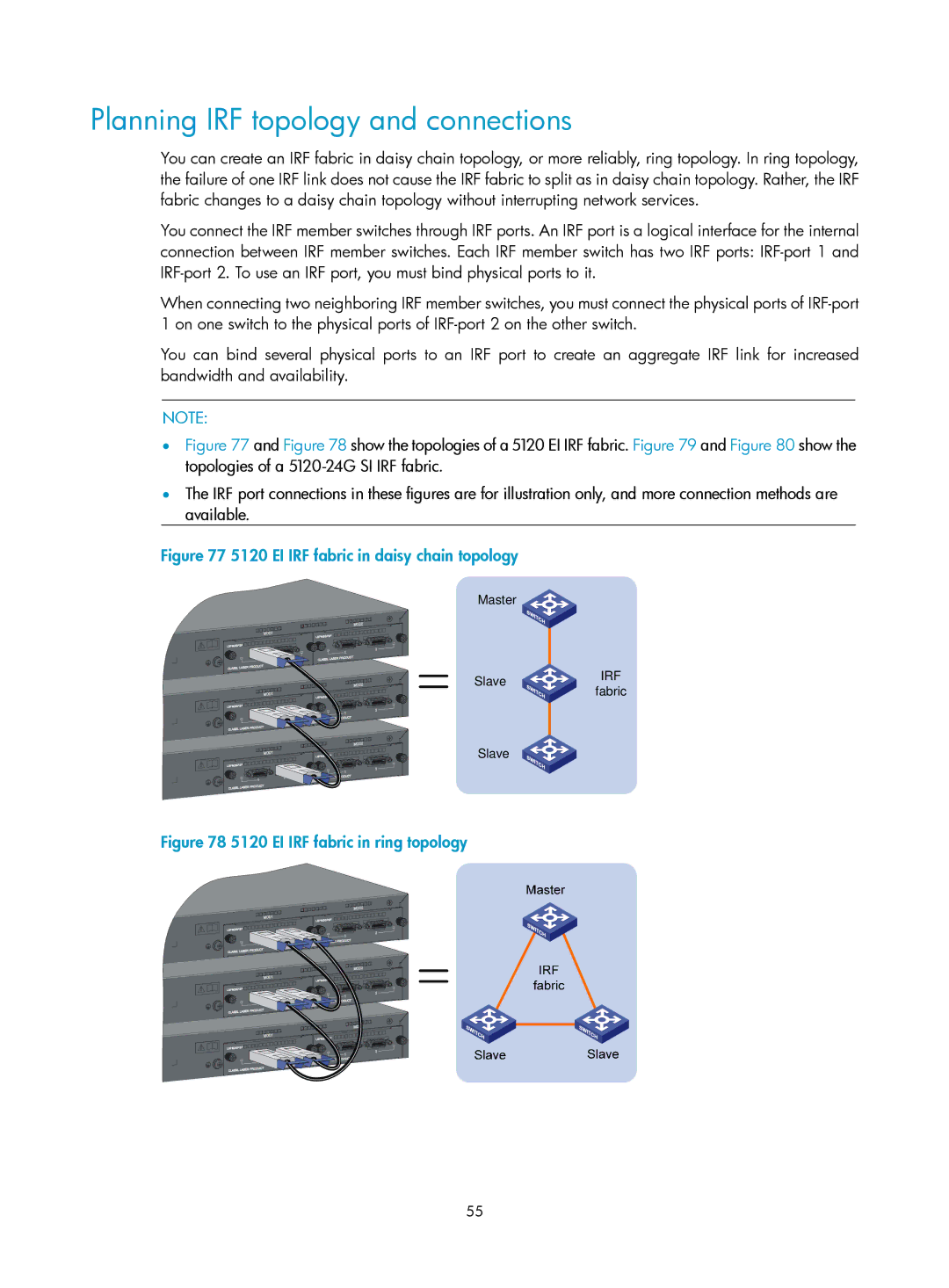
Planning IRF topology and connections
You can create an IRF fabric in daisy chain topology, or more reliably, ring topology. In ring topology, the failure of one IRF link does not cause the IRF fabric to split as in daisy chain topology. Rather, the IRF fabric changes to a daisy chain topology without interrupting network services.
You connect the IRF member switches through IRF ports. An IRF port is a logical interface for the internal connection between IRF member switches. Each IRF member switch has two IRF ports:
When connecting two neighboring IRF member switches, you must connect the physical ports of
You can bind several physical ports to an IRF port to create an aggregate IRF link for increased bandwidth and availability.
NOTE:
•Figure 77 and Figure 78 show the topologies of a 5120 EI IRF fabric. Figure 79 and Figure 80 show the topologies of a 5120-24G SI IRF fabric.
•The IRF port connections in these figures are for illustration only, and more connection methods are available.
Figure 77 5120 EI IRF fabric in daisy chain topology
Master |
| |
Slave | IRF | |
fabric | ||
| ||
Slave |
| |
|
Figure 78 5120 EI IRF fabric in ring topology
55
